What’s Up?
Eric Bowles and I headed to Jekyll Point in the dark with high hopes. The forecast was for cloudy, but the sky was filled with stars. But not for long. Clouds and offshore fog closed in from the north and by the time the sun rose, it was barely visible. And then it disappeared for an hour. With the wind from the southwest, it was a tough morning for bird photography even when the sun went behind a big cloud.
As it was cloudy on Wednesday afternoon and I have a long day tomorrow, I stayed in.
Today is Thursday 7 April 2022. We will be up early and headed for an Okefenokee Swamp boat ride. Though I have never been, I am the leader on one boat. My first program, Streamlining Your Wildlife Photography Workflow, run from 1-4pm. At 4:40pm I lead a photo walk to Jekyll Point. Yikes! I sure hope that I have time for a nap after the boat ride! 🙂
Wherever you are and whatever you are doing, I hope that you too have a great day. This blog post took about 45 minutes to prepare and makes twenty-eight days in a row with a new one.
Please remember to use the B&H and Amazon links that are found on most blog pages and to use the BIRDSASART discount code at checkout when purchasing your new gear from Bedfords. Please, also, consider joining a BAA IPT. You will be amazed at how much you will learn …
Wanted to Buy
I have a serious buyer looking for a Sony a9 II and a Sony 200-600 G lens. Please contact me via e-mail if you have one or both of those items sitting on a shelf unused.
And Please Remember
You can find some great photo accessories (and necessities, like surf booties!) on Amazon by clicking on the Stuff tab on the orange/yellow menu bar above. On a related note, it would be extremely helpful if blog-folks who, like me, spend too much money on Amazon, would get in the habit of clicking on the Amazon logo link on the right side of each blog post when they shop online. As you might expect, doing so will not cost you a single penny, but would be appreciated tremendously by yours truly. And doing so works seamlessly with your Amazon Prime account.
Please remember that if an item — a Delkin flash card, or a tripod head — for example, that is available from B&H and/or Bedfords, is also available in the BAA Online Store, it would be great, and greatly appreciated, if you would opt to purchase from us. We will match any price. Please remember also to use my B&H affiliate links or to earn 3% cash back at Bedfords by using the BIRDSASART discount code at checkout for your major gear purchases. Doing either often earns you free guides and/or discounts. And always earns my great appreciation.
Brand-New and As-Good-As-Ever Bedfords BAA Discount Policy
Folks who have fallen in love with Bedfords can now use the BIRDSASART coupon code at checkout to enjoy a post-purchase, 3% off-statement credit (excluding taxes and shipping charges) on orders paid with a credit card. The 3% credit will be refunded to the card you used for your purchase. Be sure, also, to check the box for free shipping to enjoy free Second Day Air Fed-Ex. This offer does not apply to purchases of Classes, Gift Cards, or to any prior purchases.
Money Saving Reminder
Many have learned that if you need a hot photo item that is out of stock at B&H and would like to enjoy getting 3% back on your credit card along with free 2nd Day Air Fed-Ex Air shipping, your best bet is to click here, place an order with Bedfords, and enter the coupon code BIRDSASART at checkout. If an item is out of stock, contact Steve Elkins via e-mail or on his cell phone at (479) 381-2592 (Central time). Be sure to mention the BIRDSASART coupon code and check the box for Free Shipping. That will automatically upgrade to free 2nd Day Air Fed-Ex. Steve has been great at getting folks the hot items that are out of stock at B&H and everywhere else. The waitlists at the big stores can be a year or longer for the hard-to-get items. Steve will surely get you your gear long before that. For the past year, he has been helping BAA Blog folks get their hands on items like the SONY a 1, the SONY 200-600 G OSS lens, the Canon EOS R5, the Canon RF 100-500mm lens, and the Nikon 500mm PF. Steve is personable, helpful, and eager to please.
Important Note
As an Amazon Associate, I earn a small percentage when you purchase from Amazon after using any of the Amazon links on the blog (including the logo-link immediately above). My link works with Amazon Prime and using it will not cost you a single cent. Huge thanks, BTW 🙂
Please Remember Also
Please, if you enjoy and learn from the blog, remember to use one of my two affiliate programs when purchasing new gear. Doing so just might make it possible for me to avoid having to try to get a job as a Walmart greeter and will not cost you a single penny more. And if you use Bedfords and remember to enter the BIRDSASART code at checkout, you will (still!) save 3% on every order and enjoy free second-day air shipping. In these crazy times — I lost about fifty thousand dollars in income due to COVID 19 — remembering to use my B&H link or to shop at Bedfords will help me out a ton and be greatly appreciated. Overseas folks who cannot order from the US because of import fees, duties, and taxes, are invited to help out by clicking here to leave a blog thank you gift if they see fit.


Gear Questions and Advice
Too many folks attending BAA IPTs and dozens of photographers whom I see in the field and on BPN, are–out of ignorance–using the wrong gear, especially when it comes to tripods and more especially, tripod heads… Please know that I am always glad to answer your gear questions via e-mail. If you are desperate, you can try me on my cell at 863-221-2372. Please leave a message and shoot me a text if I do not pick up.
|
|
|
This image was created on 4 April at Jekyll Point, Jekyll Island, GA. I used the no-longer-available Induro GIT 304L/Levered-Clamp FlexShooter Pro-mounted Sony FE 600mm f/4 GM OSS lens and The One, the Sony Alpha 1 Mirrorless Digital Camera. IS 80. The exposure was determined via Zebras with ISO on the rear wheel: 8 seconds at f/16 (stopped down three stops) in Manual mode. AWB at 6:48:24am on what would become a clear sunny morning. Manual focus with focus peaking. Be sure to click on the image to enjoy the high-res version. Image #1: Tidal Pool in the pre-dawn |
The Experience
Eric Bowles knows his way around Jekyll Point. Early on Monday morning, he took me in the dark to the best spot for pre-dawn photography. Most folks do now realize that on dead-clear days the vivid glow on the eastern horizon occurs at least 30 minutes before the sun peaks over the horizon. I made lots of 30 second exposures when the orange was brightest. I had the a1 set to mechanical shutter because you can only get down to 1/2 second in electronic shutter. I never check sharpness in the field. Then I remembered an old trick that I learned shooting long exposures with big lenses …
Any Birds?
There are five or six small shorebirds in today’s featured image. Can you see them? Remember, the exposure time was 8 full seconds.
An Important Old Tip Re-learned the Hard Way …
I was shooting the New York Skyline with a long lens and was mystified as to why my 15 second exposures were all badly blurred. There was no wind. If I am remembering correctly, it was old photographer friend Scott Vincent of New Jersey who shed light on the situation. When using super-telephoto lenses and working with very slow exposures, let’s say one second or longer, you must remember to turn off image stabilization (OSS for Sony, IS for Canon, VR for Nikon). If not, the systems will detect motion when there is none and shift the elements to reduce the (perceived) vibrations. I remembered that one Monday just as the color began to fade. II did a quick test on the sand patterns. With IS on, the image was hopelessly blurred. With IS off, it was sharp. Just in the nick of time, I created a few tidal pool images with OSS off. As you might imagine, the raw files — being properly exposed to the right, were dull and almost colorless. But I knew that the color was there. Thirty seconds of moving the sliders during the raw conversion with Adobe Camera Raw in Photoshop brought the image to life.
I experimented with the 70-200 at 70mm on the tripod with 30-second exposures on Wednesday morning. It did not matter whether the image stabilization was on or off.
Via e-mail from multiple IPT participant David Hollander
Primarily, what distinguished the San Diego IPT other photographic classes that I have attended was the “granularity” and specificity of the information you shared. By that I mean the level of specific, technical information that was covered. This was helped by the fact that you often gave an explanation as to why you made your choices. For example, when we first arrived at the location, you told people to shoot at 1600, F 5.6, and various shutter speeds. As the light got better, you progressively moved to lower ISOs, and gave us rules of thumb on what ISO to use in different lighting conditions.
You further explained in one of the review sessions that with modern cameras and good software, the noise isn’t really a problem and that you could get rid of the noise from a 1600 ISO a lot easier than fixing a blurred image. Similarly, you gave precise instruction on what aperture to use in various circumstances. In general, before your class, my “default” mode was to shoot in aperture priority, usually at about F 9 or 8.1. The reason wasn’t that I was trying to capture background detail, but instead was trying to increase my chances of getting the bird’s head in focus if I got the focus point in the wrong place. I will revisit that approach now. During one session, you showed a picture that had the bird’s eye in focus, but the tip of the beak was slightly off. When I asked you whether you would have used a higher f-stop in that case, you went to a website showing the impact on the depth of field at the given distance of moving up a stop, which was a fraction of an inch. That demonstrated why increasing the f-stop would not have worked in that case. From a teaching perspective, hearing the same information in multiple channels makes it more likely for people to absorb and remember it, so the technical explanations help the main message sink in. The instruction on use of the back button focus was also very helpful. I had read about that on your blog before, but I had not taken the time to try it, and now I have a new tool in my kit. Overall, I found the advice and instruction to be “actionable”. It was all there for those who were listening.
The comparison of slightly different images of the same bird was also very helpful. It showed what you were looking for head angles and placements. However, I should note that differences in many of the pictures that were acute to you were subtle to me, and all the pictures were ones that most photographers would have been proud to have taken, even the ones that you were rejecting.
|
|
|
This all-new card is comprised of images created on my JAB 2022 visit to San Diego. Click on the composite to enjoy a larger version. |
The 2022/23 San Diego Brown Pelicans (and more!) IPTs
San Diego IPT #1. 3 1/2 DAYS: WED 21 DEC thru the morning session on Saturday 24 DEC 2022. $2099.00. Deposit: $699.00. Limit: 6 photographers.
San Diego IPT #2. 4 1/2 DAYS: SAT 7 JAN thru the morning session on WED 11 JAN 2023: $2699.00. Deposit: $699.00. Limit: 6 photographers/Openings: 5.
San Diego IPT #3. 3 1/2 DAYS: FRI 20 JAN thru the morning session on JAN 23 DEC 2023: $2099.00. Deposit: $699.00. Limit: 6 photographers.
Please e-mail for information on personalized pre- and post-IPT sessions.
Join me in San Diego to photograph the spectacular breeding plumage Brown Pelicans with their fire-engine red and olive green bill pouches; Brandt’s (nesting) and Double-crested Cormorants; breeding plumage Wood and Ring-necked Ducks; other duck species possible including Lesser Scaup, Redhead, Northern Shoveler and Surf Scoter; a variety of gulls including Western, California, and the gorgeous Heermann’s, all in full breeding plumage; shorebirds including Marbled Godwit, Willet, Sanderling and Black-bellied Plover; many others are possible including Least, Western, and Spotted Sandpiper, Whimbrel, Black and Ruddy Turnstone, Semipalmated Plover, and Surfbird; Harbor Seals and California Sea Lions (both depending on the current regulations and restrictions). And as you can see by studying the IPT cards, there are some nice bird-scape and landscape opportunities as well. Not to mention a ton of excellent flight photography opportunities and instruction.
Please note: where permitted and on occasion, ducks and gulls may be attracted (or re-located) with offerings of grains or healthy bread.
|
|
|
San Diego offers a wealth of very attractive natural history subjects, including and especially the Pacific race of California Brown Pelican. With annual visits spanning more than four decades, I have lots of photographic experience there … Click on the composite to enjoy a larger version. |
Learning Exposure, Whether You Like It Or Not
Whether you like it or not, we will be beating the subject of exposure like a dead horse. In every new situation, you will hear my thoughts on the exposure situation along with my thoughts on both Nikon and Canon histograms and SONY Zebras. Whether you like it or not, you will learn to work in manual mode and to get the right exposure every time if a bird gives you ten seconds with the light constant. (Or two seconds with SONY Zebras…) And you will learn what to do when the light is changing constantly. What you learn about exposure is one of the great takeaways on every IPT.
|
|
|
Though the pelicans will be the stars of the show on this IPT, there will be many other handsome and captivating subjects in wonderful settings. Click on the composite to enjoy a larger version. |
It Ain’t Just Pelicans
With gorgeous subjects just sitting there waiting to have their pictures taken, photographing the pelicans on the cliffs is about as easy as nature photography gets. With the winds from the east almost every morning there is usually some excellent flight photography as well, often with 70-200mm lenses! And the pelicans are almost always doing something interesting: preening, scratching, bill pouch cleaning, or squabbling. And then there are those crazy head throws that are thought to be a form of intra-flock communication. You will be guided as to how to make the best of those opportunities. And depending on the weather and local conditions and tides, there are a variety of other fabulous photo chances available in and around San Diego.
|
Did I mention that there are lots of great birds and natural history subjects in San Diego in winter? Click on the composite to enjoy a larger version. |
The San Diego Details
These IPTs will include four or five 3-hour morning photo sessions, three or four 1 1/2-hour afternoon photo sessions, and three or four working brunches that will include image review and Photoshop sessions. On rare cloudy days, we may — at the leader’s discretion, stay out in the morning for a long session and skip that afternoon. To ensure early starts, breakfasts will be your responsibility. And so that we can get some sleep, dinners will be on your own as well. In the extremely unlikely event that Goldfish Point is closed due to local ordinance (or whimsy) — that has never happened in the past fifty years, I will of course do my very best to maximize our photographic opportunities.
A $599 deposit is required to hold your slot for one of the 2022/23 San Diego IPTs. You can send a check (made out to “BIRDS AS ART”) to us here: BIRDS AS ART, PO Box 7245, Indian Lake Estates, FL, 3385, or call Jim or Jennifer at the office with a credit card at 863-692-0906. Your balance, payable only by check, is due right after you sign up.
|
|
|
San Diego offers a wealth of very attractive natural history subjects, including and especially the Pacific race of California Brown Pelican. With annual visits spanning more than four decades, I have lots of photographic experience there … Click on the composite to enjoy a larger version. |
Travel Insurance
Travel insurance for both big international trips and US-based IPTs is highly recommended as we never know what life has in store for us. I strongly recommend that you purchase quality travel insurance. Travel Insurance Services offers a variety of plans and options. Included with the Elite Option or available as an upgrade to the Basic & Plus Options you can also purchase Cancel for Any Reason Coverage that expands the list of reasons for your canceling to include things such as sudden work or family obligation and even a simple change of mind. My family and I use and depend on the great policies offered by TIS whenever we travel. You can learn more here: Travel Insurance Services. Do note that many plans require that you purchase your travel insurance within 14 days of our cashing your deposit check or running your credit card. Whenever purchasing travel insurance, be sure to read the fine print carefully even when dealing with reputable firms like TSI.
|
Variety is surely the spice of life in San Diego. Click on the composite to enjoy a larger version. |
Getting Up Early and Staying Out Late
On all BIRDS AS ART IPTS including and especially the San Diego IPT, we get into the field early to take advantage of unique and often spectacular lighting conditions and we stay out late to maximize the chances of killer light and glorious sunset silhouette situations. We often arrive at the cliffs a full hour before anyone else shows up to check out the landscape and seascape opportunities.
Typos
With all blog posts, feel free to e-mail or to leave a comment regarding any typos or errors.


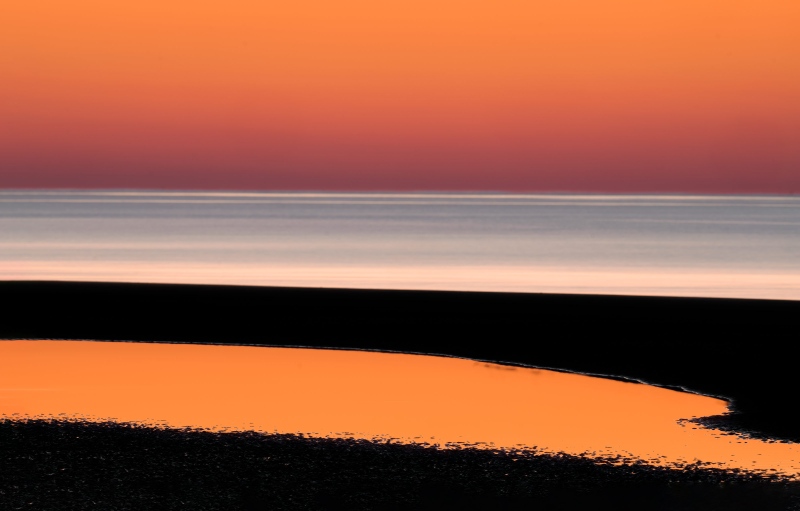
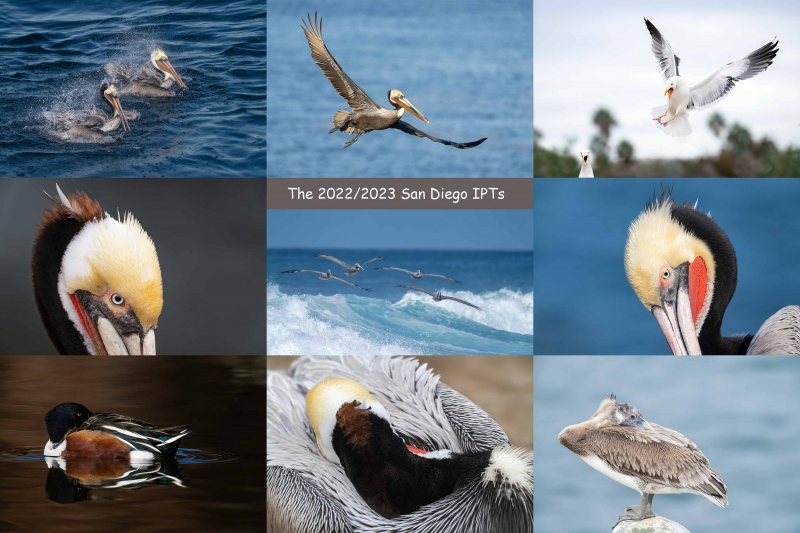
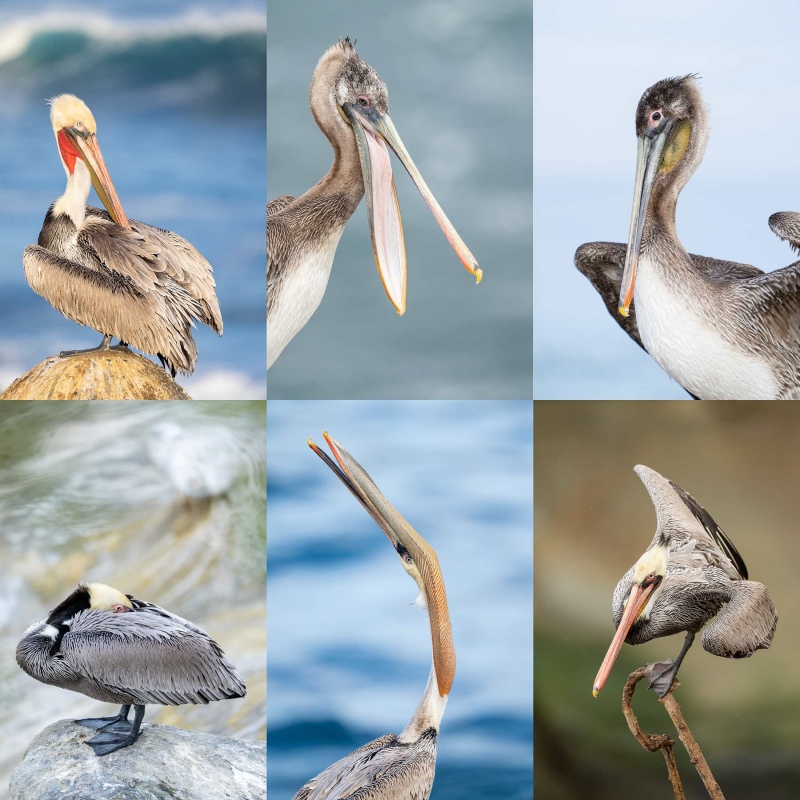
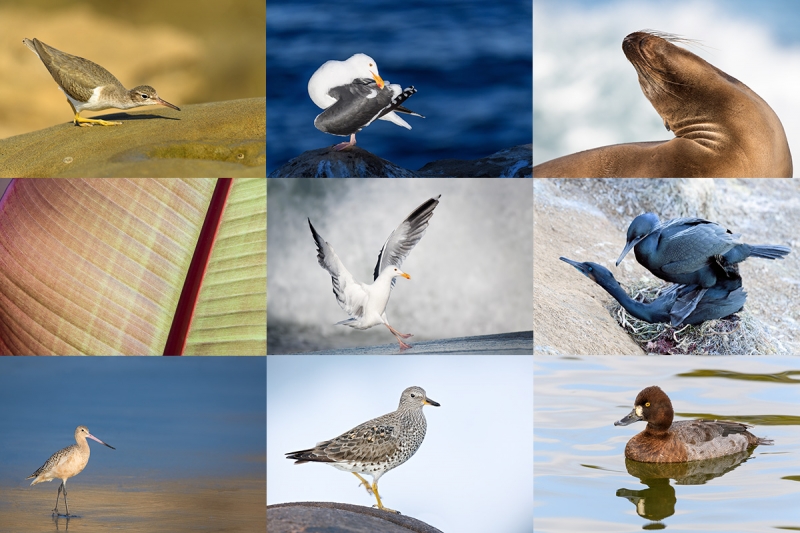

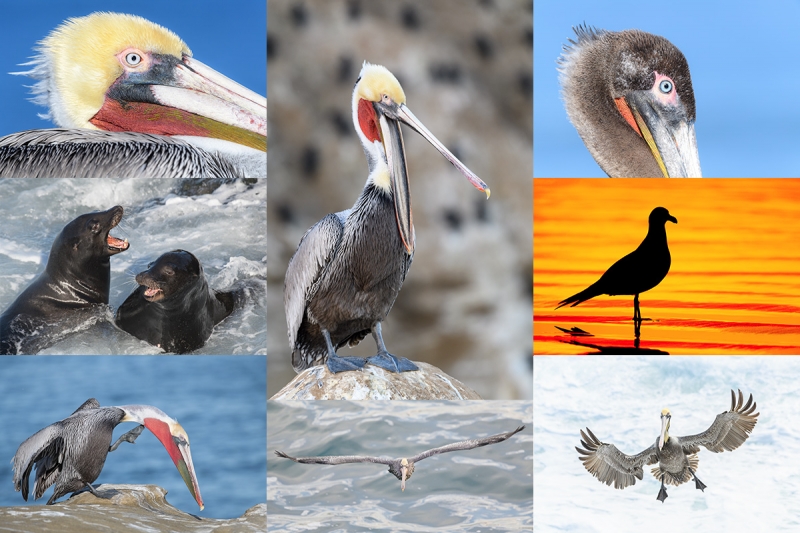














Hi Artie, Glad to see that your memory is still good! Yes, it was Aug 13, 2011 at the NYC Skyline workshop when you learned about long exposures and issues with image stabilization. Thanks for remembering. Hope all is well – Scott
Good to know that you are still out there, Scott. But cannot find my keys!!!
With love to you and Carol, artie
Beautiful image, Artie…..and I completely agree about your flower blur!
It’s a super abstraction with beautiful colors and linearity, though I liked your blur from the other day too. It must have been a treat to behold in person. Likewise, I have been graced with the return of my two angelic, trumpeter swans from their annual migration as the Midwest slowly continues defrosting.
Now that is a shot that is muy artistic like. Very beautiful. Great tip on long lenses with slow shutter speed. If only I could afford such luxury in glass! and no I can’t see any birds even after you hinted at where to look.
Hey Jeff, Glad that you liked. I do not like this one 1/10 as much as the recent flower blur.
They are there — you might need a new laptop or maybe some new glasses …
with love, artie
ps: look in the water on the far right upper shoreline of the pool and you will see their ghostly smudges.
As I scrolled down to the orange, I said “wow”. Beautiful color and composition. Are the small birds the 5 or so smudges, probably reflections, at the top right of the tide pool, just in the edge of the orange water?
That be them 🙂
with love, artie
Loved the juxtaposition of colors on your unusual landscape! No, I couldn’t see the birds.
Thanks, Pat. There are five or six small shorebirds on the right side of the far shoreline of the tidal pool. Since the exposure was 8 seconds they appear only as ghostly figures.
with love and LMK how the new tripod goes.
artie